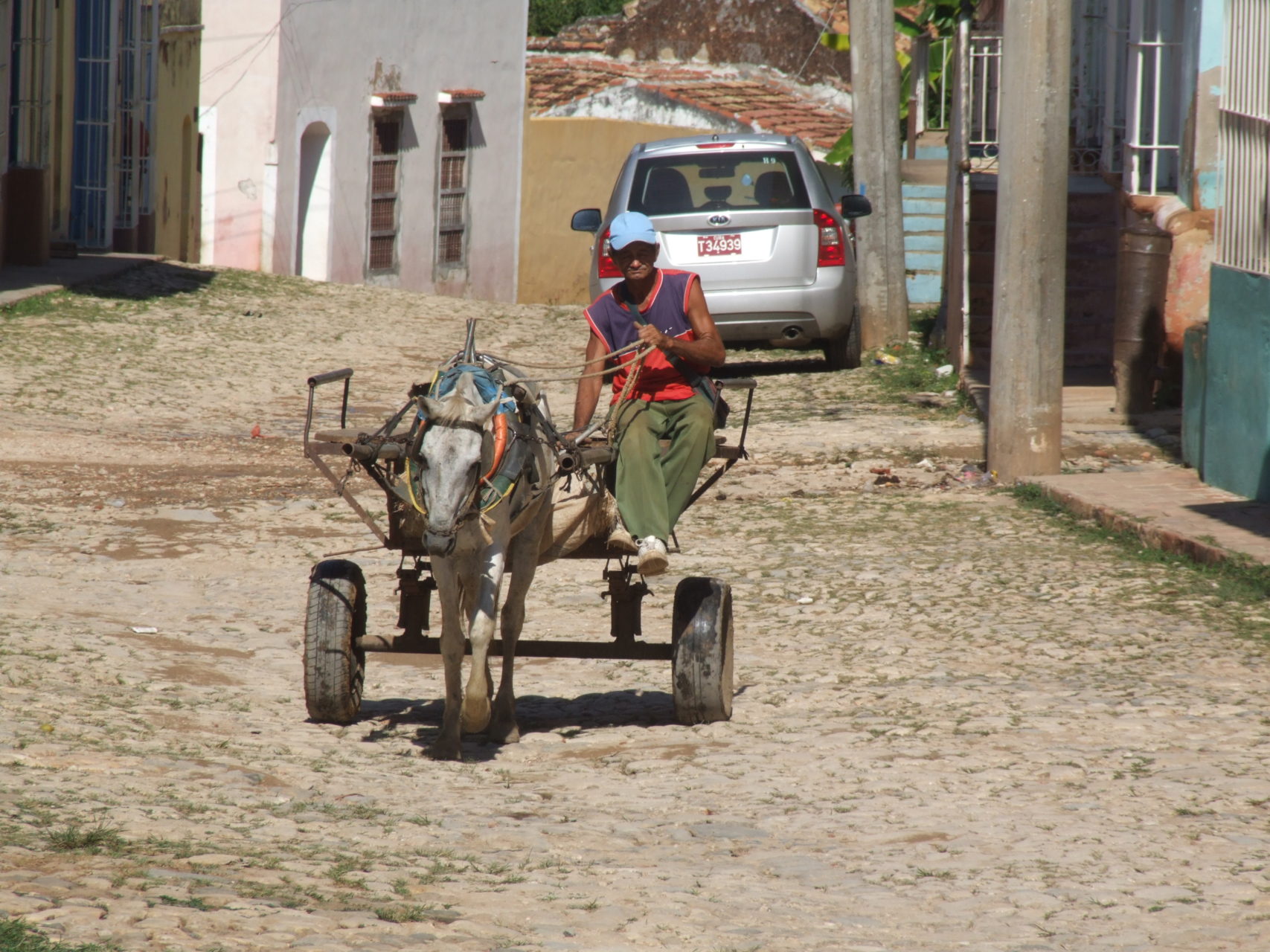
If you want to get away from the adverse effects of mass consumerism, extreme concentration of wealth, social unease and poverty, Cuba is an intriguing destination. Like in many countries your experiences can be filtered both by your cultural prejudices and expectations and by your tour operator. Many tourists just head for the beach resorts of Varadero, Cayo Coco, Guardalavaca, Cayo Largo del Sur or Baconao near Santiago. They see Cuban life on the periphery through the rearview mirror of the rented cars and happy to encounter the charm and friendliness of thousands Cuban hustlers or jineteros, who gather at all popular tourist attractions to offer a multitude of services in exchange for convertible pesos, buy souvenirs and admire revolutionary graffiti replete with portraits of Che Guevara and Camilo Cienfuegos. To many such visitors, mainly educated upper middle class Europeans, South and North Americans, Cuba is ripe for a dose of globalisation, inward investment and democratic reforms.My interest in Cuba was slightly different. I wanted to see how an ostensibly non-capitalist country is faring in a predominantly capitalist world. How could Cubans survive without the benefits of Wall-Mart, Starbucks, international banks, PlayStations, XBoxes and a steady diet of consumer advertising? Were all Cubans eager to hop on the first boat to Miami? Were they crying out for the kind of multi-party elections we purportedly enjoy in the enlightened West. In my late teens and early 20s I had been active in various leftwing Trotskyite grouplets, before growing disillusioned with the prospect of a worldwide revolution driven by a vanguard party and becoming much more concerned with the practical issues facing our species such as the environmental sustainability of the primary economic model of continuous material growth, i.e. before we can begin to distribute resources more fairly and eliminate poverty we need a sustainable model of development so future generations can enjoy the same level of material wellbeing. I had never really had any illusions with the former Soviet Union, having briefly travelled in Erich Honecker’s old East Germany, or Maoist China, but the Cuban Revolution was essentially anti-imperialist and its alliance with the Soviet Union more a matter of convenience rather than strict ideology.
If you measure wellbeing by the state of strategic infrastructure such as roads, railways, telephony, electric power, plumbing etc… then Cuba will disappoint you. Just 90 miles or 140km south opulent Miami, Havanna (La Habana) is, with the exception of a few areas of Habana Vieja (old Town), Vedado and Santa Maria, in a state of disrepair, attempting to add new life to infrastructure inherited from pro-US Bautista era with a few additions during the countries 30-year long alliance with the USSR.
Consider your classic high-budget tourist staying a couple of nights at Havanna’s immaculately opulent Hotel Parque Central, visiting Habana Vieja before relaxing by the pool of a newly built Varadero hotel complex. To such a traveller Cuba is a mere playground with a Hispanic flavour and rather unique Che Guevara branding. Why not have your picture taken smoking a Habanero cigar, wearing a Che T-Shirt and drinking a Mojito? Since the fall of Stalinism in the Soviet Union and the rise of Islamic fundamentalism as a new official enemy of the great North American dream, advertisers in Western Europe have exploited Che as a rebellious sex symbol appealing to a certain faux counter-culture mindset (to understand this concept better, read
The Rebel Sell: How the Counter Culture Became Consumer Culture
by Joseph Heath and Andrew Potter
Many observers have wondered whether Raul Castro’s cautious reforms will usher in a new era of capitalistic growth with trendy multinationals setting up shop across Cuba. In Centro Habana, I did see one discreet shopping mall, but most shop names were unrecognisable. Over the last 20 years not only have shopping centres become indistinguishable across the UK, but in much of the world from Tokyo to Johannesburg, Toronto to Buenos Aires, but not yet in Cuba. Everything is still very low key, almost like a blast from a recent past, such as err the 1970s when each country had its distinctive commercial flavour. With the US’s global economic influence declining and friendlier trading neighbours in nearby Venezuela and Mexico, the relative benefits of succumbing to US demands to open up markets are waning. In 1990s following the breakup of the former Soviet Union, Cuba weathered the storm of international isolation by becoming almost self-sufficient and taking drastic measures to cope with a dearth of imported oil. Cubans still love their cars, but only those who can earn hard currency can afford fuel or maintenance. In Havana, it seemed all car owners had become tax drivers. Outside the main cities, the roads are largely desolate, a few trucks, buses, horse-drawn buggies and rental cars driven by affluent tourists.
Cubans seem very eager to talk with foreigners, but surprisingly at least compared with other countries, few wanted a visa. One guy did complain about not being to travel, but on the whole, Cubans seemed surprisingly aware of life abroad. Not only do many have relatives in the States or Europe, but they can pick up Spanish-medium TV stations from Miami. Yet despite the lure of shiny gadgets and higher wages, most seem content to stay, measuring their welfare not against North America’s gated neighbourhoods, but against neighbouring Haiti, the poorest country in the Caribbean and Jamaica with the highest crime rate.